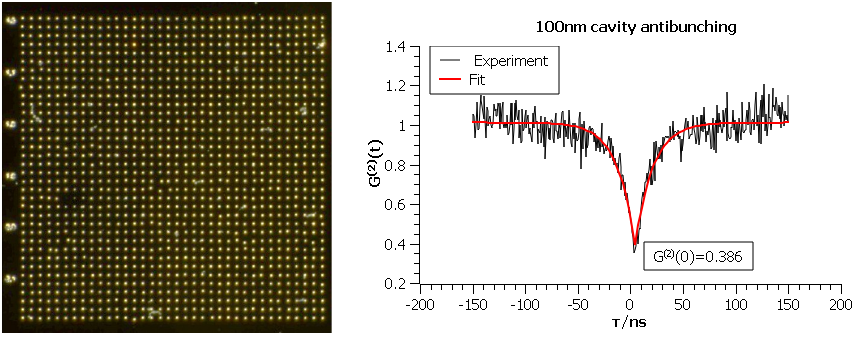by Xiao Yu
200 years ago, the establishment of the electromagnetic field theory triggered a technological revolution. From telephone to radio, people benefit a lot from controlling the electromagnetic field. Every discovery of new mode of interaction can profoundly change human society. Nowadays, this “new” interaction is quantum mechanics. The central concept is no more classical electric current or force torque applied on a lever but the quantum state of matter. This is harder to be observed and controlled. In order to produce or detect quantum states of atoms/photons… You normally need to reach some extreme conditions or scales. Photon is a good carrier of quantum information. It can be coded, propagate and you can make connections (entanglement) between photons. To obtain and control the single photon state, we need single photon source. There are many possibilities: parametric down conversion, nitrogen-vacancy color centers, quantum dots, quantum well, etc.
Review the development of information technology, electronic devices become more and more compact. This trend is reasonable. Integrated device means less material, massive production and it is easier to produce complicated system. This could be the same in quantum information technology. In the last two decades, Researchers began to develop the technology to manipulate single photons source on photonic chips. Single quantum dot is a candidate of on-chip single photon source. The quantum dot is previously called artificial atom. It is a small core-shell semiconductor structure whose diameter is only around 10nm. As an analogy of atom, when electrons are confined in a sufficiently small structure, its energy level becomes discrete. When you illuminate a single quantum dot at specific wavelength, the quantum dot will absorb the excitation photons and emit fluorescence photons. From the perspective of production technology, single quantum dot is easy to produce and sufficiently stable. But in order to use it on the photonic chip, we need to control its position to couple it to the photonic circuits correctly. This is not an easy task. Remember the diameter of a single quantum dot is less than 10nm. To manipulate such a small object, there are two main methods. The quantum dot can be taken and positioned by AFM tip, this method is accurate but not efficient. The other method is to use the lithography. The idea of lithography is to make small cavities on photoresists layer. Then we spin coat quantum dots solution on the sample. Some quantum dots fall into the hole and stick on the substrate. The process is just like thousands of golfs go through the putting green, there are always one ball falling into the hole. In the experiment, we found more than 70% cavities contain quantum dots.
Once we obtain quantum dots in the cavity, we can remove the mask layer by the lift-off process. In the end, we can control the position of single quantum dot by designing the lithography pattern. In experiment, we can characterize the single quantum dot by Hanbury Brown and Twiss interferometer. It consists by a beam splitter and two avalanche photodetectors (APD) in the two optical paths. If a photon emitter is a single photon emitter, it has high probability to emit only one photon at the same time period. We call this phenomenon photon antibunching. When we send the photon trains to HBT interferometer, since these photons are anti-bunched, in certain time period, we expect a high probability to detect only one photon in either APD, and the event of both APDs detect photons at the same time is not likely to happen. We can quantify if a photon emitter a single photon emitter just by calculating the ratio of these events. The less two-photon events occur, the better the single photon source is. We call this function the second order correlation function. Figure 2 shows a normalized second order correlation function of a single photon emitter. There is an antibunching dip in the curve which represents the source is a single photon source.

Darkfield image of the deposited quantum dots (left) and antibunching dip of a quantum dot (right)
Now, we can control the position of single quantum dot. You may want to couple it to photonic circuits to realize some functions. But this coupling is far from efficient. There are many modifications can be done on it. We can modify the fluorescence itself by modifying the environment of quantum dots. We can also enhance and manipulate the coupling. I will leave the story for Part 2.
